A flicker of hope in a therapeutic journey
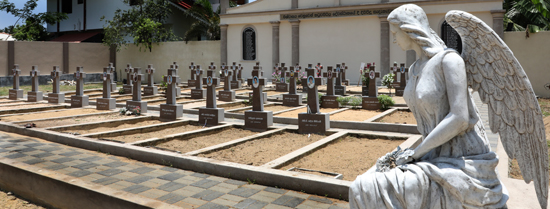
St. Sebastian’s Church, Katuwapitiya: A sad reminder of those who met an untimely death on that fateful Easter Sunday. Pix by M.A. Pushpa Kumara
It is as the country prepared to celebrate the Sinhala and Tamil New Year after the Easter Sunday commemorations were over that we revisited the hapless town of Katuwapitiya on Monday.
Next Wednesday (April 21) marks the harrowing second anniversary of the Easter Sunday bombings by Muslim extremists of three churches and three hotels. The deadly target of the blasts at Katuwapitiya’s St. Sebastian’s Church, Kochchikade’s St. Anthony’s Church and Batticaloa’s Zion Church as well as Shangri-La, Cinnamon Grand and Kingsbury hotels left 269 dead plus eight bombers and a large number injured.
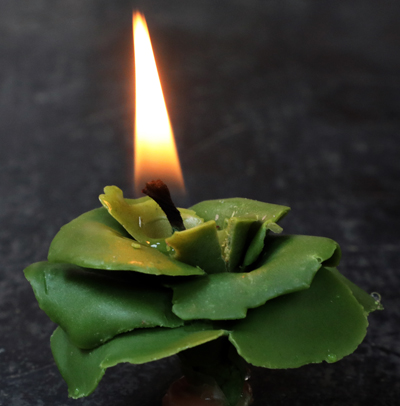
Handmade: A story behind each maker
Nothing much seems to have changed at Katuwapitiya, the worst-affected, since our many visits not just in the year (2019) that the Easter Sunday morning service at St. Sebastian’s Church was shattered but thereafter.
The church which was a damaged shell has been rebuilt and in the nearby cemetery, the green bushes at some of the graves of those who met an untimely death, are putting forth their white blossoms.
The sadness lingers heavily and it seems as if it would take forever to wipe away the tears over the loss, the fear still hauntingly present and the dissatisfaction at what has followed.
From the time of the life-changing trauma that the beleaguered families of Katuwapitiya faced – husbands losing wives and children and vice versa, children becoming orphans in the blink of an eyelid and many suffering terrible physical as well as mental scars – a familiar and comforting presence has been the nuns who have been with them throughout.
These nuns have given ear to their woes, provided a shoulder for them to cry on and been there for rebellious children who had not been able to come to terms with the events of that fateful day, guiding them back to their studies and a semblance of normalcy.
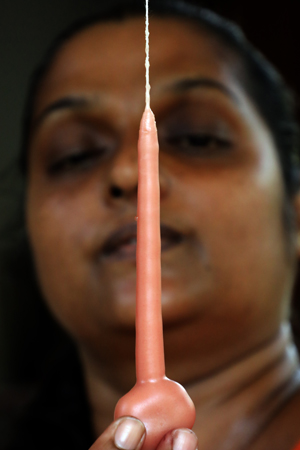
Niroshini
On Monday, a women’s group tells the Sunday Times of the lifeline provided thereafter by Sr. Canice Fernando which not only helped them to hold onto sanity but also made them smile again.
This lifeline, while being therapeutic, has opened up a self-employment opportunity for them when the second blow of COVID-19 rained on them.
“Every week after the blast, we gathered up anyone who wished to join our trauma counselling and after a while helped the women and children to start growing vegetables and green leaves in their tiny home gardens. Then came COVID-19 bringing double trauma with loss of income and fear of disease and death,” says Sr. Canice.
Something more, a different activity, had to be done to alleviate the added trauma and Sr. Canice picked up soap and candle-making for them, holding workshops at the home of N. Monica Sriyani at the top of Nirmala Mawatha.
Before getting into the details of this cottage industry, Niroshini Fernando (42) recalls the terrible day of the blast and murmurs that the images are still seared into her mind.
“Mevi penawa. Palliyata adarai, eth tika kalayak palli yanna beruwa hitiye,” she says. She, her husband and their two daughters (now 17 and 11 years old) were seated in church, just as the Paasku service was drawing to a close. The explosion left them in shock. She did not know that she was severely injured and was trying to help the other fallen when her husband told her that she was bleeding.
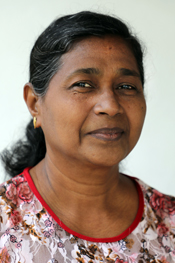
N. Monica Sriyani
Later Niroshini learnt that a lead ball from the bomb was wedged very close to her susumnawa (brainstem). It had been touch and go – a slight change in the location could have killed or paralyzed her. Even taking it out was risky and it was after several attempts that it was carefully lifted out by the doctors. But the headaches hit her even now and she finds it difficult to look down for a long time. Both her daughters suffered severe ear injuries.
For another, Miriam Gayani (53), there were no physical injuries but the mental impact of seeing many of their friends and neighbours lying dead or severely injured has scarred her. These scars would take a long time to heal.
“We couldn’t sleep for months and my two daughters and son, crowded into one room in the night, keeping the mol-gaha (pestle) under the bed and locking and re-locking the doors against possible intruders,” she says.
Niroshini and Gayani are among several women who have taken up soap and candle-making and explain how they are engaging in this cottage industry in earnest.
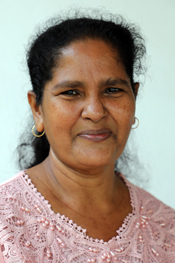
Miriam Gayani
For herbal soap, says Niroshini, in her kitchen she double boils glycerin and the komarika or turmeric, with the ratio being 4:1, while adding katarolu to give a splash of colour and nutrition and also Vitamin E.
“No chemicals are used,” she says and they are using the soap themselves as well.
Taking us through the process of candle-making, Gayani explains that she double boils wax such as mee-iti and citric acid, while keeping the moulds ready with the wicks inserted and then pours the mixture into the moulds once it is slightly cool, to set. She adds oil to give it a scent.
“These are for tea-candles but the process is different for normal candles used in churches,” says Gayani. For that, she dips the wick into the wax-citric acid mixture and then inserts the wax-clinging-wick into water, repeating the process several times to get the thickness that she requires for the candle.
Their children are also helpers in this therapeutic work and “produce” moulds, whatever they can find around their homes such as bottle covers or small toys.
While these women are hoping to supplement the home budget with what they earn from candle and soap-making, both Niroshini and Gayani are vocal that like for them, all those engaged in this cottage industry are finding it to be relaxing and therapeutic.
| A helping hand will go a long way for them | |
| The Katuwapitiya women who are engaged in candle and soap-making are facing a few challenges on this therapeutic journey.Finding the raw material for which they have to travel to Pettah is one problem, while the cost is another. Giving a simple example, Niroshini says that the nool-kella (wick) and mould cost Rs. 20, while Gayani adds that they are able to sell a tea-candle only for Rs. 20, with no slight profit for their labours. Another plea from these women who are attempting to raise their heads after a terrible blow is: Help us market our home-made candles and soap. Any support in finding markets will show them that we, the people who did not experience this horrendous attack, are with them two years on and that they are not a forgotten lot.
|



